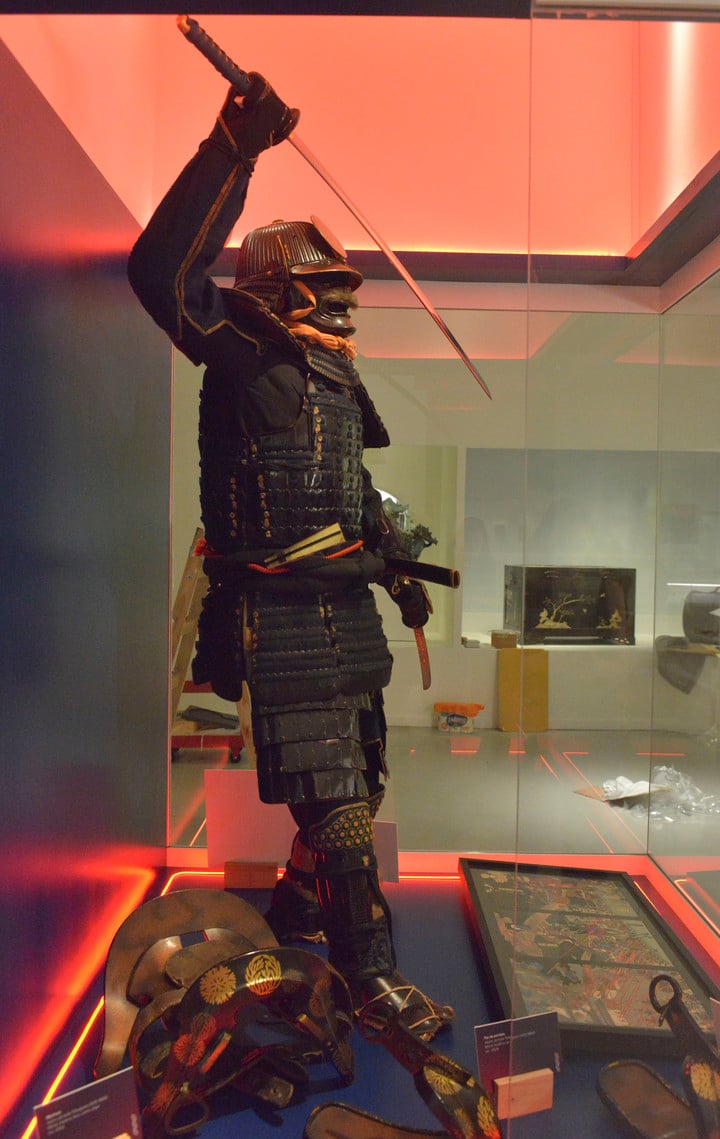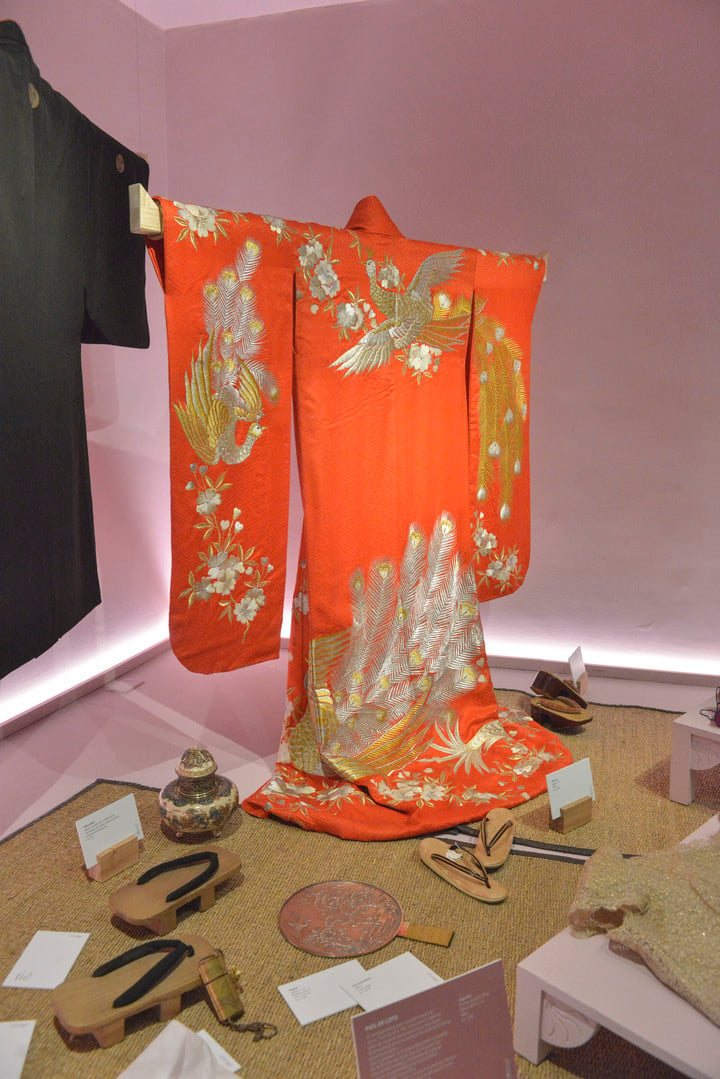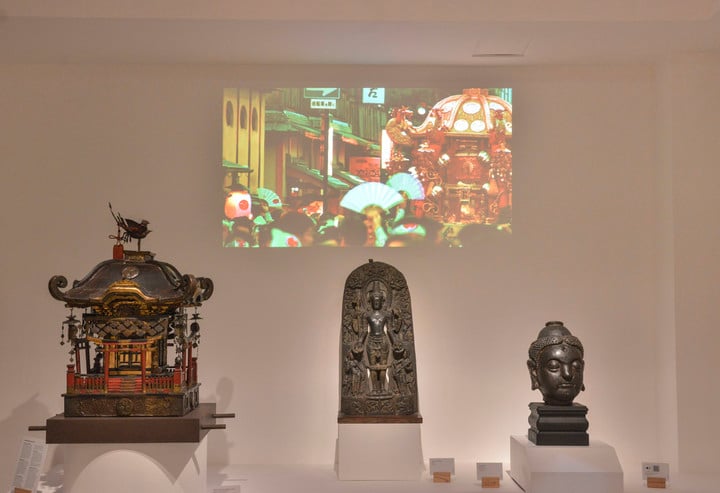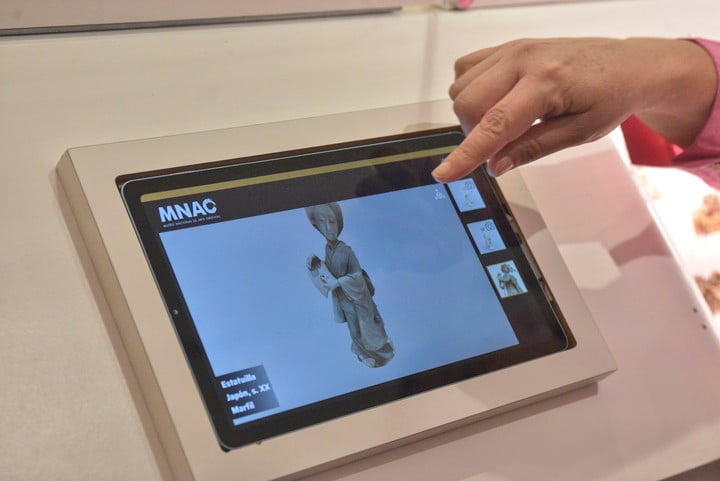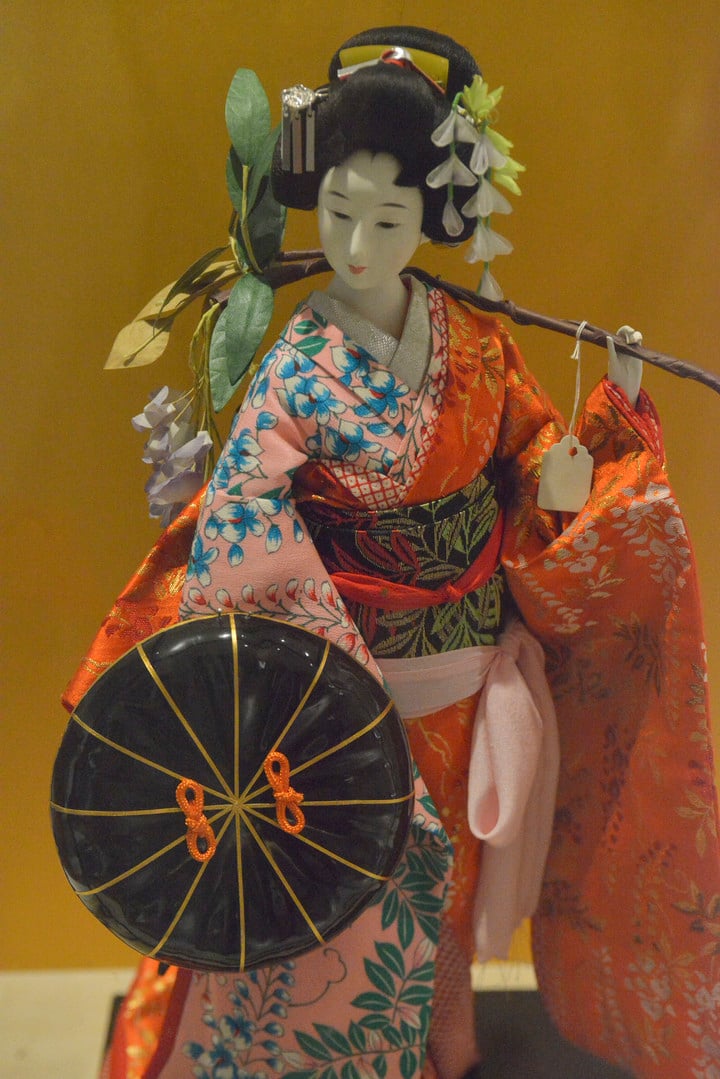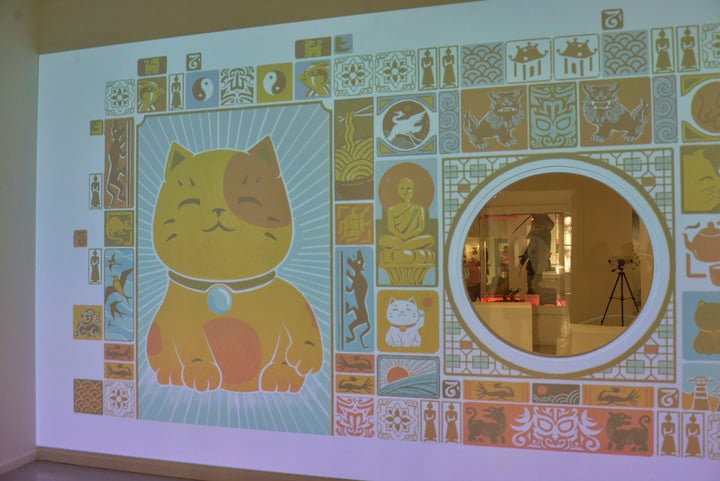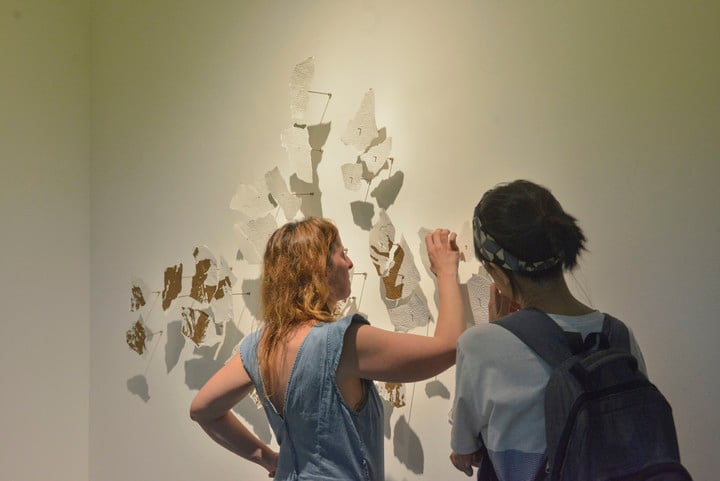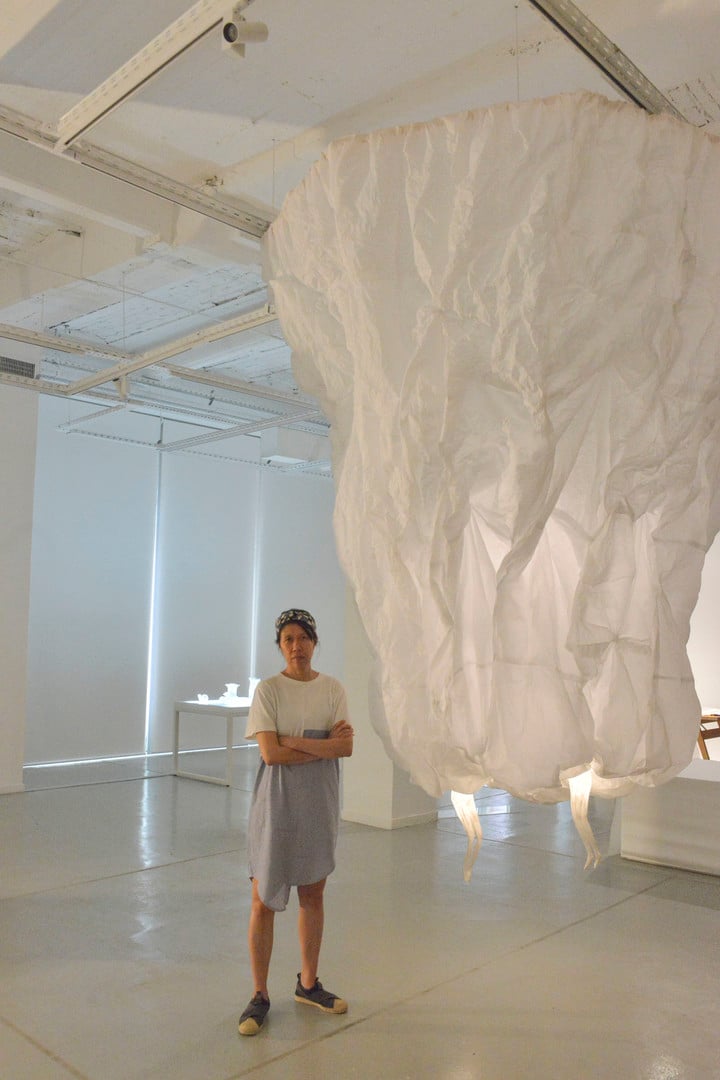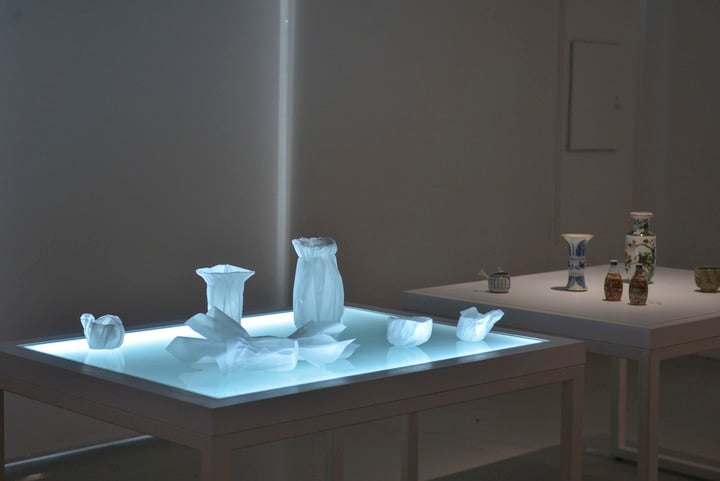Two Fo dogs – that’s what they’re called – welcome us at the entrance of the new National Museum of Oriental Art (MNAO) in hall 3 of the Borges Cultural Center. One is male and rests one of its legs on a round object, clearly a planet – and not a ball as one would assume in the middle of the World Cup. On the other side, it is a female who has a cub under her paw.
they say they are guardians, mythical creatures who welcome us while protecting us. To its sides, now without a showcase in between, two smaller replicas of these creatures are located one on each side of the visitor: they can be touched. Touch art objects in a museum? The new Oriental Art Museum will exhibit pieces from the other side of the planet, but it will be first of all “accessible” and “interactive”.
On this tour that is about to begin, the Buddha keepers that can be touched will be followed by showcases set low to the ground –so that they are within easy view of both children and people in wheelchairs–, pedals to turn on the lights of the showcases, fabrics to feel, aromas to smell, videos to watch, buddha heads to touch, Chinese shadows to appreciate. And there is more.
middle all is the permanent exhibition of this Museum, which reopens to the public on Thursday in its new location after the closure forced by the pandemic and its recent move from Museum of Decorative Artwhere it was based in the old rooms of Josefina de Alvear on the first floor of the Errazuriz Palace. They ensure that this seat is the final one so that the Oriental, in addition to “home”, gained in space: it went from 200 to 1,000 square meters.
An oriental art museum in Argentina –located in the western part of the map– makes you think: how do we conceive oriental art on this side of the planet? Is Japanese, Chinese or Indian art the same? How did these objects get to the country? What concept or preconception of the East do we have from the West?
These questions, among others, partly order the assembly of this cultural space. The pieces that make it up have made their trip overseas, they have traveled thousands of miles to reach the Río de la Plata, especially if one takes into account that most of them have previously stopped in Europe.
The heritage of the Oriental is made up of more than 4,000 pieces –there are 200 on display– originals from China, Japan, Korea, India, Egypt, Turkey, Armenia, the ancient Persian empire, Tibet, Indonesia, Malaysia, Thailand, among other countries. Its collection is made up of paintings, sculptures, engravings, everyday objects, cult objects, clothing, musical instruments, toys, photographs and furniture from different oriental cultures.
After greeting and touching Fo’s dogs, three screens show fragments of films made in the West between the ’50s and ’90s but which refer to the East: Aladdin, Karate Kid, James Bond, Kung Fu Panda, Indiana Jones, Austin Powers, Casablanca, to mention a few. The intent of these projections is highlight the ideas we build about what the East is like and that are fundamental in the assembly of the subsequent route.
Then will come the Japanese trunk belonging to a German family that lost everything in a fire in that country, all except this gigantic trunk that arrived in the country in the 1960s and the latest addition to the Museum. There will also be a tribute to Bertucci Tower, the musicologist who donated a large part of the pieces that are part of the collection of this space. Until you reach the great samurai, katana in hand and in fighting position. Some red lights are activated for two minutes and illuminate it for whoever presses the pedal at the foot of the cabinet that contains it.
Start the first sample kernel here middle all, according to the curator Anush Katchadjian, as she finalizes the details hours before the official opening on Wednesday afternoon. This part groups what could well be titled “East and detail”, given that many of the small pieces that make up this part of the route are accompanied by a touch screen that allows you to get closer to the details of the figurines and even visualize sides that the museographic arrangement does not allow to see, such as the base of the feet of a statuette resting on a shelf.
“If there is detail, it is because there is time”, they explain to us to make us understand the artisanal process that each of these objects entails. The meeting point of the detail of the East and the West will be a huge Japanese vase with a lot of gilding purposely in the way that the Europeans imagined oriental art: all golden.
“We review our preconceptions to reconstruct new ideas from objects, adding the perspective of contemporary artists and local communities. The National Museum of Oriental Art seeks to disseminate both oriental cultures and contribute to coexistence in the diversity of our societies,” they explain. Lucia de Francesco and Anush Katchadjiancurators of the exhibition.
The second core of the tour is “East and sensuality” and here appear the silky and shiny fabrics to touch oneself, the small bottles to smell the different spices and what this, perhaps, evokes: a noisy oriental market, with smells, music, moving fabrics and many people around.
“In addition to the traditional public, we want to attract a young public with taste and curiosity about oriental culture, manga, K-pop, Japanese courses, ramen,” he says on the tour. Marisa Baldasarre, National Director of Museums.
“The proposal is not exclusively linked to the collection of objects but rather to the practices of the people in Argentina and the admiration of many communities through the practices that come from Asian countries, such as dance, food, calligraphy, poetry, cinema, animation, comics, manga”, supports Rocío Boffo, director of the Oriental Museum.
As a third nucleus, the “Eastern spirituality” and here we do find a video that shows the diversity of beliefs and a large Buddha head that can be touched. An audio guide enabled for the occasion allows us to access the explanation of why the Buddha has his eyes half-open or to know if he is meditating or sleeping or in a trance or in a state of nirvana and why he has snails on his head.
The last ordering axis of the sample is “East and nature”, where four prints appear that follow the order of the spring, summer, autumn and winter seasons, which metaphorically indicates the path of life. A writing table displays a poem by John L. Ortiz about a passage from Entre Ríos, which could well describe a tour in China.
Finally, two screens invite the visitor to make a matches between the first place that comes to mind when thinking of the Orient –for example, Chinatown– and a person –for example, Bruce Lee–. The result of matches It will be Bruce Lee in Chinatown.
Sample in dialog
The temporary sample is also added to the permanent sample: Trace. glimpses of an orient. Inspired by the Museum’s collection, the artists Johanna Wilhelm and Aili Chen They set up a proposal in dialogue with the permanent collection, in a curatorial project by Viviana Usubiaga.
While Johanna Wilhelm –expert in papercut and one of the makers of the wonderful work The man who lost his shadow– made figures cut out of paper, XX took the papers that wrapped the pieces in the move from one venue to another and in the manner of a doppelganger restored that memory to them. A video shows how these pieces were handled and moved, wrapped in a paper that, like them, is also part of the exhibition.
“That idea about the other side of our world is replicated in his works made on paper, paradigmatic material of the imaginaries on oriental arts. His creations in the rooms are a counterpoint to the collection and to each other. In a contrasting and complementary duality, the pieces by Aili and Johanna display lights and shadows, almost white and almost black”, he expresses. Viviana Usubiaga in his curatorial text.
The history of the Oriental Museum already includes several chapters: founded in 1965, in 2001 it closed its doors for 18 years after a complaint for the theft of 400 pieces and the poor preservation of heritage. Some pieces were said to have been replaced with replicas. From that moment, during the following two decades, the institution held exhibitions in outside spaces, such as the National Endowment for the Arts, the Palais de Glace and the Korean Cultural Center, for example, but always without its own headquarters.
It reopened in 2019 with two rooms and a reserve that can be visited inside the French palace that is the seat of the Museum of Decorative Art (and that now with the move from the Oriental it will recover those spaces for its own use). Among the rumors, it was said that the Museum would move to the Palais de Glace, to the house of Lucio Mansilla (near Chinatown) and to the Casa del Bicentenario. Finally, It ended up at the Borges Cultural Center, based on a resolution of the national Ministry of Culture: this venue, although still inside another, now, they say, is definitive.
Also, the Eastern It now has an educational room for families and schools and a reserve room that can be visited. For 2023, it proposes a program that will integrate various proposals, including talks by specialists, guided tours of the exhibitions, workshops, screenings, and concerts.
File
middle all Y Trace. glimpses of an orient
Where: National Museum of Oriental Art, Viamonte 525, 2nd floor, pavilion 3 of the Borges Cultural Center.
When: from Wednesday to Sunday, from 2:00 p.m. to 8:00 p.m.
Entry: free.
pc

